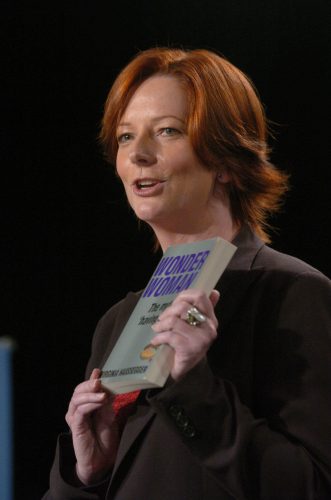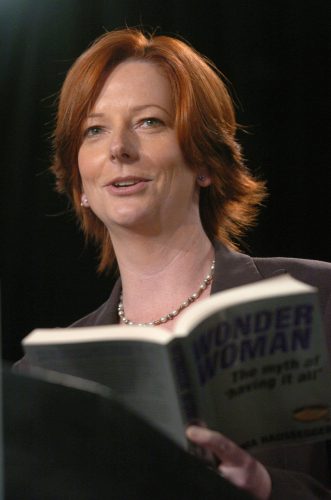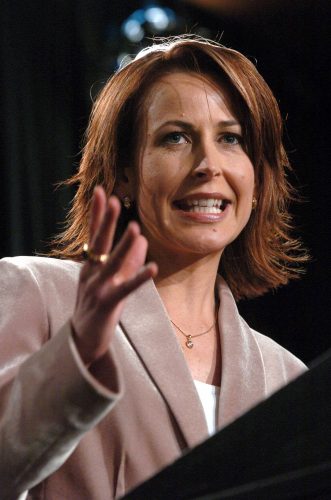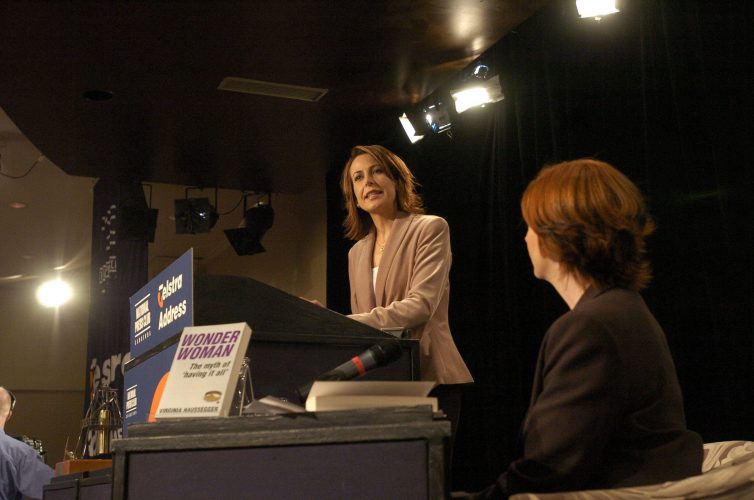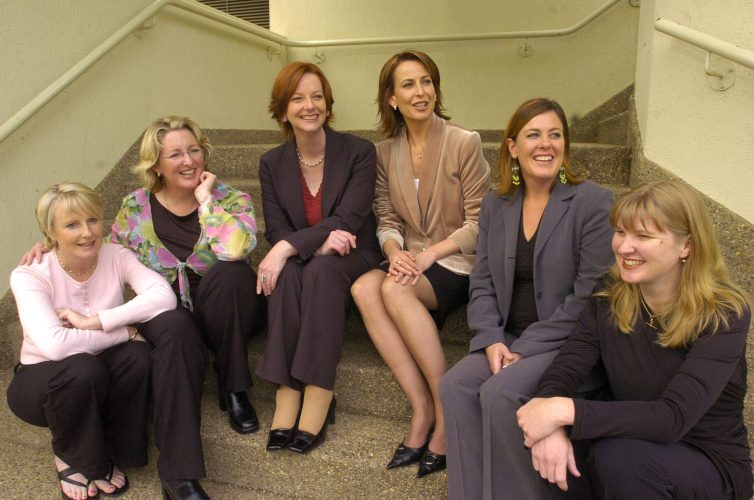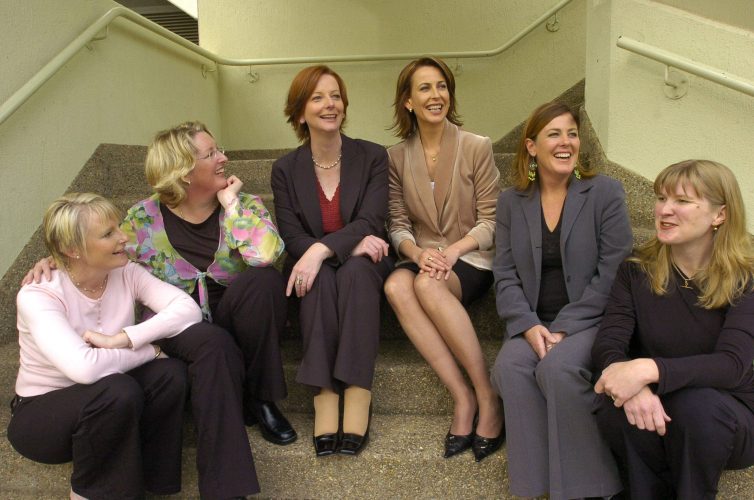She may be an annoying grunter, but if Maria Sharapova wins Wimbledon this year she’ll have won more than a Grand Slam. She will have won herself a place in feminist history books – whether she likes it or not.
It’s taken 123 years, but finally Wimbledon has caught up with the other Grand Slam tournaments and buckled under the pressure for pay parity. This year’s women’s winner will be the first to take home the same prize pay packet as the men’s.
So if we can do it for women’s tennis, why not for the rest of us?
No matter how much grunting we do, Australian working women are still being short changed. In fact equal-pay-for-equal-work is a mantra that seems to have lost its voice. Which is curious, given the gender pay gap in Australia remains bogged down in a salary rut.
Based on Average Weekly Earnings data published last month, the Australian Bureau of Statistics says that the ratio of female to male full- time total earnings ranges from 80.7c at worst to 81.2c at best. The Government however puts the ratio higher. It says women earn 89.4c to the male dollar. It’s not using a different calculator, just a different calculation. Obviously a more optimistic one.
And that optimism seemed to be in overdrive when Employment and Workplace Relations Minister Joe Hockey read the latest ABS data. He must have whipped off his green horns, dropped his Shrek impersonation, and donned a fairy wand to whip up the enthusiasm displayed in the press release issued the day the data was made public. ”ABS Wage Data Shows Women are the Winners,” the May 17 release heralded.
If, like me, you’re always on the lookout for signs of positive progress, the headline worked a treat. But in the small print the news got even better. After ”welcoming” the ABS wage material, Minister Hockey was quoted as saying, ”The wages data show that female earnings have outstripped male earnings over the past year”.
Outstripped? (Yes, I know, it takes a re-read). But that’s what it said. So at last, Australian women are earning more than men? Could that really be right?
The Minister went on to say how ”this is good news for working Australian families”. Forget the proverbial political football, the ”Australian family”, Minister, this is great news for all working women, including singles and non-mothers. If only it was true. But it’s not.
With no fairy wand in hand, the ABS is a lot more sober in its interpretation of its own data. According to those who crunch the numbers at the bureau, ”In dollar terms, growth in male total average weekly earnings exceeded that of females”.
Women have not earned more than men over the past year. In fact, nowhere near it.
The Minister’s press release states that women’s earnings have ”increased in real terms” by 1.5 percent more than men’s: a reference to seasonally adjusted ”growth”. But according to the ABS, the ”trend estimates provide a more reliable guide”: which in this case shows a tiny 0.3 per cent growth in women’s earnings.
However, growth is not the key issue. Money is.
If we look at hard, cold cash figures, using the same data, men earned $1136 per week (adult, full- time, ordinary earnings), as against women’s $958 for the same category. But given many full-time working women don’t get the same opportunity as men to work overtime, it’s perhaps more telling to look at the ”total earnings”. In that category the differences in income are even more stark. Men’s total weekly earnings are $1022, against women’s $676.
How anyone, much less the minister in charge, can interpret all that to mean that ”female earnings have outstripped male earnings over the past year”, is simply baffling.
Perhaps one of the clearest indicators of the entrenched imbalance in gender pay ratios is the latest data on graduate salaries. According to Anna McPhee, director of the Equal Opportunity for Women in the Workplace Agency, ”The old argument as to the reasons for total pay inequity, like ‘men have been in the workforce longer’, or ‘men work longer hours’, or ‘men choose different careers’, do not apply when you look at graduate salaries.”
In 2006, the average starting salary for a graduate with a bachelors degree was $42,000 for a male and $40,000 for a female.
Female graduates are earning significantly less in the fields of medicine, social sciences, architecture and building. Even in education, where female graduates outnumber males by 6 to 1, boys still earn more than girls: $45,000 compared to $43,000.
These sort of pay gaps are mirrored in the United States. A recent report by the American Association of University Women found female college graduates earn, on average, 80 per cent of their male counterparts. And it gets worse. A decade after college graduation the women’s earnings have not only dropped to 69 per cent of their former male classmates, but the males are reported to have ”more authority” in the workplace than their female counterparts.
So what’s going on? How can it be that despite girls doing better than boys at school, and with more female than male graduates hitting the workforce, women workers are still valued less? And let’s not be coy about this. Our pay rate is all about how we are valued – or not.
Professor of management at the Melbourne Business School, Mara Olekalns, says a lot of it comes down to gender stereotyping. ”There is an expectation among both men and women that women will be willing to accept less money and work for longer hours doing the same job.”
Somewhere along the evolutionary process, it seems women missed out on learning the art of negotiation. Figures out of Harvard Business School attest to that. Despite being well-trained in the machinations of business communication, according to Professor Olekalns, recent figures show only 7 per cent of female Harvard graduates negotiated their first pay deal, compared to 57 per cent of males.
Professor Olekalns says, ”women expect that their skills, ability and performance will be recognised and rewarded, without them having to ask. But that actually doesn’t happen.”
So what to do? Time to hit the tennis court, and start grunting – loudly.
